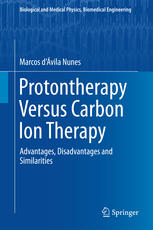

Most ebook files are in PDF format, so you can easily read them using various software such as Foxit Reader or directly on the Google Chrome browser.
Some ebook files are released by publishers in other formats such as .awz, .mobi, .epub, .fb2, etc. You may need to install specific software to read these formats on mobile/PC, such as Calibre.
Please read the tutorial at this link: https://ebookbell.com/faq
We offer FREE conversion to the popular formats you request; however, this may take some time. Therefore, right after payment, please email us, and we will try to provide the service as quickly as possible.
For some exceptional file formats or broken links (if any), please refrain from opening any disputes. Instead, email us first, and we will try to assist within a maximum of 6 hours.
EbookBell Team

4.4
72 reviewsThis book presents a comparison analysis of two cancer treatment therapies: carbon ion therapy and protontherapy. It is divided in 5 sections. The first ones gives the reader a brief history of Radiotherapy and types of radiation. In the second section, the techniques and equipments, including new ones in development such as Cyclinac , Laser and DWA, are described. The third section describes biophysical (such as stopping power and LET) and biological (such as RBE and OER) properties, the fundamental experiments and clinical area. The fourth section presents models and the fifth section compares both techniques, showing advantages and disadvantages of each, and their similarities.